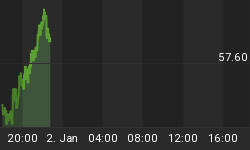Market Outlook
For the week ending February 15, 2013, the SPX was up 0.1%, the Russell small caps were up 1.1% and the COMP was down 0.1%.
With the SPX and RUT up seven consecutive weeks, the "seven candle rule" would say probability favors weakness next week on both of these indices.
The Nasdaq 100 remains flat as does tech while the Dow is starting to show a clear loss of momentum and failed to hold model support on an intraday basis on Friday. This typically foretells of a subsequent failure on a closing basis in the coming days.
Small, mid and large cap indices remain in an uptrend as daily support has not failed though they are showing some loss of upside momentum. If you are long equity, stops that are recommend are roughly 1,510 on the S&P500, 912 on the Russell and 13,940 on the Dow.
FX markets are fueling risk as the JPY pairs are at an extreme overbought level and starting to show signs of a reversal. Position data is confirming that a trend reversal in USD/JPY is probable and model levels were pierced on an intraday basis, though did hold on a closing basis.
Asset Class Correlations
For the week ending February 15, 2013, the EUR was unchanged, copper was down 0.4%, 30 year yield was up 1bp and the Aussie Dollar was down 0.1%.
The model has triggered short AUD/USD which will likely put downward pressure on the JPY pairs, pressuring non-equity asset classes including Treasury yield lower. The EUR/USD failed to hold model support and is flat, though close to triggering short. Inversely, the dollar closed above model resistance with confirming momentum and therefore triggered long.
The multi-month divergence with equity and the EUR, AUD, copper and 30 year yield remains. As a result equity may show greater relative weakness as part of any future asset class convergence. Using any of these asset classes as a directional indicator may likely produce false signals. Our preference is to use JPY pairs.
This week saw a renewed divergence with 5 year Treasury break evens which were down 2bp on the week.
Sentiment
Market sentiment remains extremely complacent as viewed through the options market with the VIX at 12.46, a 6 year low. Implied volatility skew continues to rise, averaging 127.20 for the week and closing at 130.46, a level last seen on 9/21/12.
Skew is a measure of how implied volatility is distributed. The lower the reading the less skewed the curve, indicating a normalized distribution.
Funds Flow
For the period ending February 6, 2013, $0.7 billion flowed in to domestic equity funds while $6.0 billion flowed in to both municipal and taxable bonds. After nearly a year of continuous equity outflows, this is the fifth consecutive inflow into domestic equity funds though the amount was down sharply from the prior week of $3.5 billion.
For the month of January, domestic equity funds had a net inflow of $6.8 billion while bond funds had a net inflow of $29.5 billion. For 2012, domestic equity funds had a net outflow of $149.3 billion while bonds funds had a net inflow of $295.4 billion.

Bottom Line
Equity markets are technically in an uptrend with the exception being tech including the NQ (Nasdaq 100). The Dow is showing the greatest momentum loss and likely to be the next index to stop out. With the extreme levels on all major JPY pairs we view other asset classes as more favorable from a risk reward standpoint.
JPY cross pairs need to be monitored closely for any signs of an unwind. They remain highly stretched at current levels with COT data confirming a probable reversal. This will pressure other risk assets ahead of the general equity markets. At the end of the week these global currency pairs began failing model support on an intraday basis. A sign that they will likely fail early next week on a closing basis.
About The Big Picture: All technical levels and trends are based upon Rethink Market Advisor models, which are price and momentum based. They do not use trend lines nor other traditional momentum studies. To learn more about how the models work, please click here or visit http://rethink-markets.com/model-profile






















